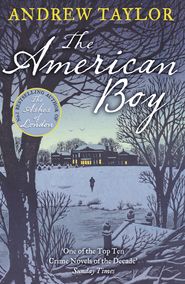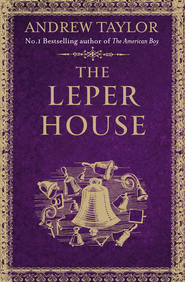По всем вопросам обращайтесь на: info@litportal.ru
(©) 2003-2024.
✖
The Ashes of London
Автор
Год написания книги
2019
Настройки чтения
Размер шрифта
Высота строк
Поля
‘Show this paper to the men on the gate, and they will let you in. Give the portfolio into his own hands, mind – he was most particular about that – and take care to keep it clean. Be off with you. And keep it dry. Hold it under your cloak.’
It was still raining, though less heavily than before. Wrapped in the grey cloak she had stolen from the man at St Paul’s, Cat walked through the ruins of London. After Temple Bar and the first few houses of Fleet Street, there was nothing to be seen but devastation.
Even now, six weeks afterwards, London was a desert from the Temple to the Tower. You could see from one end of the City to the other. All that was left of the greatest city in the country, apart from mounds of ash and rubble, were gutted churches and blackened spires, fragments of stone and thickets of unstable chimneystacks. In places the heat had been so intense that stones had calcined and become an unnatural white in colour.
The change in the weather had affected everything, and not on the whole for the better. The rain had turned the pale ashes into a dark grey sludge that clung to your shoes and pattens and stained your clothes. It was growing colder, too. Everyone said it was going to be a bad winter.
Cat crossed the Fleet Ditch, which was choked with sooty debris. Tendrils of smoke rose up from the labyrinth of ruins on either side of Ludgate Hill, for rubbish still smouldered, and fires burned slowly in deep, almost airless cellars.
At Ludgate, the mounting block was still there, marked by the flames, but one of the few features recognizable from before the Fire. She supposed she should feel guilty about the thin young man for repaying his attempt to help her by biting his hand and stealing his cloak; but a sense of guilt was one of the luxuries she could no longer afford.
In a moment Cat reached the spot where she had stood on the night of St Paul’s destruction. Had her father been inside? Had he been among the nameless dead? She wanted to know, one way or the other. Her lack of knowledge unsettled her. Even after he had fled abroad at the Restoration, she had known he was living somewhere beyond the Channel. Occasionally letters from him would come, sent care of an unknown friend and then passed to Jem, who would slip them into her hand.
She paused to look at the ruined portico. By a strange paradox, it had been her father’s pride. He had been a mason by trade. Before the war he had worked on the cathedral under the direction of Master Inigo Jones. True, Master Lovett hated the Church of England and all its works, including St Paul’s. But she had seen him stroke the stones of one of the columns as a man strokes a favourite dog. He had talked, almost against his will, of the novelty and the elegance of the portico’s design.
A porter passed close to her, brushing his hand over her hip. She moved quickly away. In the old days, she had not been a servant and she had never walked alone in the streets. Now she had become a target for passing men of all ages, for their touches, squeezes, attempted kisses and lewd suggestions. She wondered at this, at the curious lack of discrimination that men showed in their lusts.
In Convocation House Yard, a crowd was gawping at the bodies propped against the wall. St Paul’s had given up a number of its dead because of the Fire, for tombs had burst open in the heat and flagstones cracked apart. Some corpses were little more than skeletons. Others were clothed in dried flesh in various stages of decay, a few with fragments of clothing and shrouds clinging to them. The souvenir hunters had been at work, and there were bodies that had lost fingers, toes, hands or feet; one lacked a skull.
Pride of place, according to Mistress Noxon, went to Bishop Braybrooke, who hadn’t been seen in public since 1404. His mummified corpse had tumbled down to St Faith’s in the crypt underneath the choir. Here he was in person, propped on his feet against a blackened wall to await his second resurrection: he was quite intact, with many of his teeth, a red beard and hair, though his skin was like leather.
A fence had been erected in the angle between the cloister containing the ruined Chapter House and the south wall of the nave. Its gate was guarded by a watchman with a large dog. He took Cat’s paper and peered at it, his lips moving. She had already examined it – it was a general pass, signed by Master Frewin, the Chapter Clerk, and was so thumbed and greasy that it had clearly been used many times before.
Even with the pass, however, the watchman did not let her in. He made her state her business and told her to wait. He sent a boy to fetch Master Hakesby. The dog, which was chained to one of the gateposts, strained towards her and forced her to recoil, to the obvious entertainment of its master.
With a sudden stab of loss she thought of the mastiffs she had left behind her. Now Jem was dead, she missed none of the human inhabitants of Barnabas Place, with the possible exception of Aunt Olivia, but she yearned for the dogs, for their protection and their uncritical affection.
Thunder, Lion, Greedy and Bare-Arse. Especially Bare-Arse.
The boy returned. With him came Master Hakesby. He was a tall, shabbily dressed man with his own grey hair. Everything about him was thin, from his long feet to his head, a distorted cylinder of bone perched on narrow shoulders. Cat curtsied. He held out his hand for the portfolio.
‘Come with me,’ he ordered. ‘I may need other drawings as well, and you can fetch them. I shall enquire of Dr Wren when he comes.’
The watchman pulled on the dog’s chain, drawing him to one side so Cat could pass through the gateway. She followed Master Hakesby across a yard that stretched from the outer wall of the cloister towards the west end of the cathedral.
An open tent stood to one side of the yard. Workmen were sorting a miscellany of objects heaped against the wall at the back. Cat glimpsed an iron-bound chest with a curving lid. Propped against it was a marble bust of a periwigged gentleman that could not have been long from the sculptor’s chisel. There was a blackened memorial brass of a dead cleric and a carved throne of painted wood surmounted by an episcopal mitre.
‘Come along,’ Master Hakesby said over his shoulder. ‘Dr Wren is away, but he sent word he will be here at any moment and he wishes to see this most particularly.’
Blocks of stone stood in the open air, some of them carved. It occurred to Cat that, if they did not repair St Paul’s, the ruins would become, if nothing else, a vast quarry.
Master Hakesby led her into a shed, about fifty feet long, which had been built against the exterior of the cloister. Two clerks were standing at a long, high desk and entering items into ledgers that lay open before them. Behind them was a ledge with a jumble of boxes and books on it. At the other end of the shed was a table to which a sloping surface had been attached with iron clamps. Hakesby walked over to it.
‘Don’t touch anything,’ he said, glancing back over his shoulder. ‘Stand over there and dry yourself by the brazier.’
Two plans were laid out on the slope, their corners held down with fragments of fire-burned stone. There were pens and ink laid out beside it, together with the tools of a draughtsman’s trade – compasses and rulers, set squares and dividers, pencils and pens.
Master Hakesby set down the portfolio and examined the contents. Afterwards he returned to his drawing board. She watched him, straining her eyes to see what he was working on. Not St Paul’s, she thought. This was more than any church. She made out lines that crossed each other in a pattern. Not a grid: more complicated than that. Streets? A city? London itself?
Was it his own design or one of Dr Wren’s? Or both? She had heard Master Hakesby say that Wren had too much work to handle all the detail himself, and besides he frittered away too much of his time in Oxford or in meetings at Whitehall or with prospective clients. Master Hakesby was his draughtsman, almost his partner, though the designs were usually in Dr Wren’s name.
The hand holding the pen trembled. Hakesby steadied it with his left hand. He paused, took a deep breath, and continued his work.
Cat was growing uncomfortably hot by the brazier. She loosened the cloak about her shoulders.
At the same moment, Master Hakesby’s hand twitched, seemingly of its own volition. The side of it brushed the inkpot, which toppled over. Ink glided towards the portfolio. He swore. The inkpot rolled over the edge of the table and fell to the floor, leaving a trail of drops to mark its passage.
Cat darted forward. The cloak fell from her shoulders. She scooped up the portfolio and the sheets of paper lying beside it.
Master Hakesby looked at her. His lips worked but no words came out. Cat put the portfolio on a stool and crouched to pick up the inkpot. There was a rag on the table, which she used as best she could to wipe up the spilled ink.
Hakesby was still staring at her.
‘Sir,’ she said, softly so the other men would not hear her. ‘What is it? Are you ill? Shall I—’
‘Be silent.’ His lips twisted into a scowl.
She was looking at the plans, which were similar to each other. ‘It’s London, sir, isn’t it? Or part of it. But – but a different London.’
His eyebrows shot up. ‘How do you know that?’
She nodded at the geometric mass of fortifications in the lower right-hand corner, by the north bank of the river. ‘Because that’s the Tower, sir – it says so. And the Thames, from there to London Bridge, and—’
‘You can read?’
‘Yes, sir, and write a fair hand.’
She had known serving women who could do both, there was no reason why she should not be one of them. She came a step nearer, and still holding the inkpot.
‘But all this is different, sir. The Tower’s not that shape. And that space to the west, where eight roads meet – what is that?’
‘It is a plan of London as it might be. Not London as it is.’
‘Dr Wren’s London?’
‘And mine, as well,’ Master Hakesby said, scowling. ‘Indeed, as much mine as his, if the truth be known. A vision of what this city might be.’
His right hand, which was resting on the table, began to tremble again. He covered it with his left hand, pressing it down. He glanced at Cat and saw the curiosity in her face.
Вы ознакомились с фрагментом книги.
Приобретайте полный текст книги у нашего партнера:
Приобретайте полный текст книги у нашего партнера:











